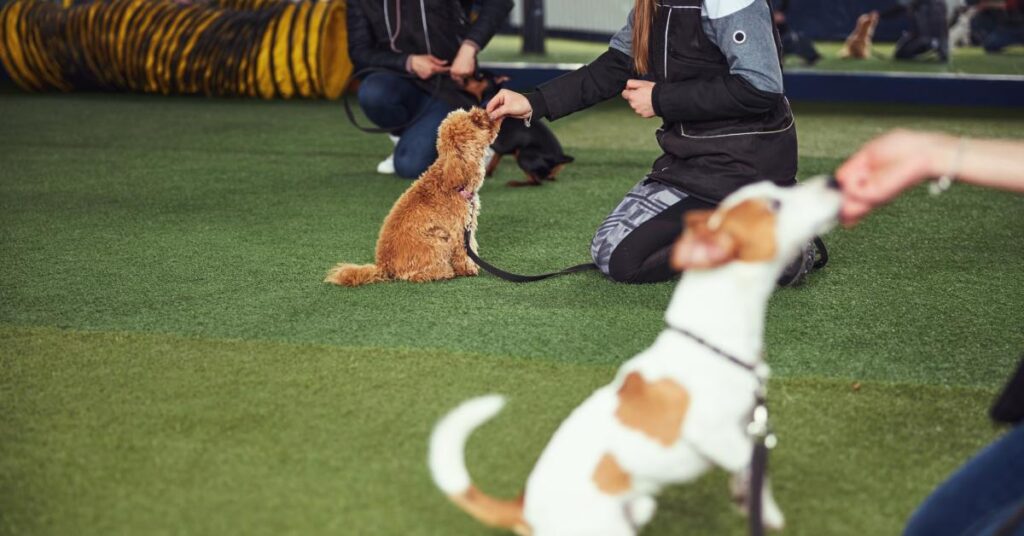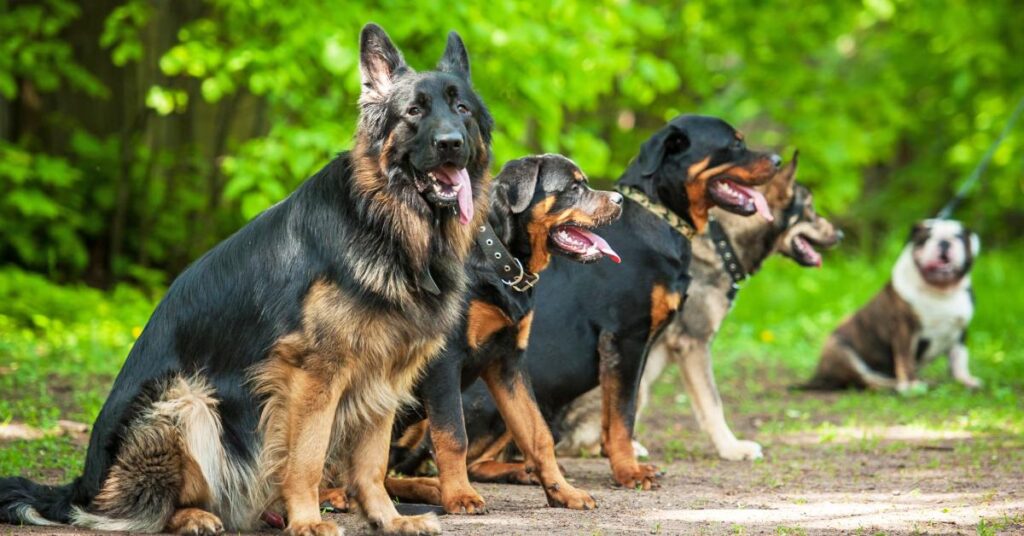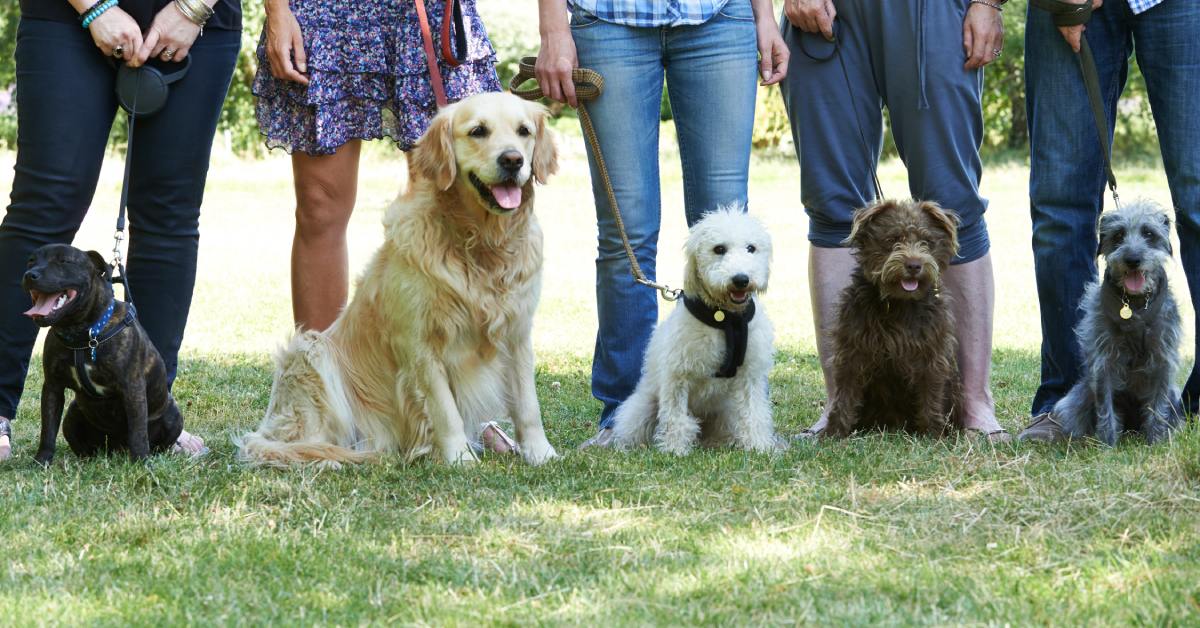You’ve made the decision to enroll your furry friend in group obedience classes. Maybe your pup has been pulling on the leash during walks, or perhaps they get a little too excited when visitors come over. Whatever the reason, you’re taking a positive step toward training a more reliable dog and building a stronger relationship with them as well.
Obedience training comes in many forms, including boarding schools, daily drop-off classes, and private owner-trainer sessions. But one of the most common—and difficult for owners—is group training. In this format, your dog stands among dozens of others as they learn essential commands. This setting is great for socializing your dog and teaching them to navigate distractions, but it’s also challenging. For instance, transitioning from one-on-one home training to a room full of barking, excited dogs and their owners might feel overwhelming for both of you.
Balanced K9 Academy is here to help you successfully introduce your dog (and yourself) to group obedience class. Read along for some tips that will set your dog up for a positive learning experience that builds confidence rather than stress.
Start With Basic Commands at Home
The point of the training is to teach your dog commands, but the process is much smoother if your pup already knows a few of the basics. They do not need to be perfect—again, that’s what the class is for. But try to instill an understanding of “sit,” “stay,” “come,” and other simple cues.
Practice these commands in short, five-minute sessions throughout the day. Use high-value treats that your dog absolutely loves, and keep the training positive and fun. Dogs that arrive at class with some basic understanding will feel more confident when they’re asked to perform these behaviors in a distracting environment.
Gradually Expose Your Dog to Distractions

The biggest challenge of group classes is that they’re riddled with distractions that your dog probably doesn’t encounter at home. Other dogs will be barking, people will be moving around and yelling, and there will be new smells and sounds everywhere.
Help your dog prepare by gradually introducing controlled distractions during your home training sessions. Have family members walk around while you practice commands, or play recordings of dogs barking at a low volume. Reward your dog for maintaining focus on you despite these interruptions.
Take your training sessions to different locations too. Practice commands in your backyard, at a quiet park, or in front of a pet store. Each new environment teaches your dog that commands apply everywhere, not just in the familiar comfort of your living room.
Socialize Your Dog with Other Dogs
Your dog will get up close and personal with other dogs in a group class, so they must be socialized. You can’t bring your dog to class if they are a danger to the other canine students and their owners. If your dog is young and hasn’t had much exposure to other dogs, start this process months before your first class.
Arrange playdates with well-behaved dogs belonging to friends or family members. Visit dog parks during quieter hours when there are fewer dogs present. Walk your dog in areas where they’re likely to encounter other dogs on leashes, allowing them to observe and gradually become comfortable with the presence of other animals.
Watch your dog’s body language during these encounters. Signs of stress or overexcitement—like excessive panting, whining, or pulling—indicate you may need to slow down the socialization process.
Practice Leash Manners
Most group obedience classes require dogs to be on leash for safety reasons. Therefore, your dog should be comfortable walking on a loose leash without pulling, lunging, or wrapping themselves around other dogs’ leashes.
Work on leash training daily in the weeks leading up to your first class. Practice walking in straight lines, making turns, and stopping on command. Teach your dog to walk calmly beside you, even when there are interesting distractions nearby.
Use a front-clip harness if your dog is a strong puller. This type of harness redirects their forward momentum and makes it easier for you to guide them without constantly pulling on the leash. It’s easier for you and safer for your dog since you exert force on their chest, not their neck.
Prepare for the Physical Environment

Group classes can take place indoors or outdoors. Regardless, the specific environment is probably completely new to your dog. As a result, they might feel disoriented if they arrive on the first day to a confusing environment.
That’s why if you can visit the training location beforehand, do so. Many facilities welcome prospective canine students to stop by and get familiar with the space. Let your dog walk around, sniff, and explore while the room is quiet and less overwhelming.
If you can’t visit ahead of time, arrive 10–15 minutes early for your first class. This gives your dog just a bit more time to adjust to the new environment before the lesson begins.
Pack the Right Supplies
You should arrive with everything your dog needs for a successful class experience. Mostly, this means treats. Bring plenty of small, soft training treats that your dog finds irresistible. Avoid treats that are too large or take a long time to chew, as these will slow down the training process.
You’ll also need to bring a portable water bowl and maybe some water if the session is outdoors without access to a fountain. And don’t forget to pack your dog’s vaccination documents, as you might need these to check in. Lastly, have cleanup supplies like waste bags and paper towels. Accidents happen, particularly when dogs are nervous or excited, and being prepared shows respect for the facility and other participants.
Manage Your Own Expectations
Your dog will likely be more distracted and less responsive in their first few group classes compared to training sessions at home. This is completely normal. Dogs need time to adjust to new environments and learn to focus despite distractions.
Stay patient and positive during the learning process. Your dog will pick up on your emotional cues, so if you become frustrated or tense, your dog will sense this and may become anxious too.
Introducing your dog to group obedience classes is a big step for their training and an opportunity to grow closer with them. Use these tips to make the transition as seamless as possible.
However, group training isn’t for every owner and every dog. If you’re looking for a more hands-off or intimate experience, then consider signing up with Balanced K9 Academy. We offer boarding and training, where your dog will spend four weeks learning from the best. If you want your dog home each night, then we also offer daily drop-off classes. Or for the hands-on owners, we offer private lessons where it’s just you, your dog, and an expert trainer. We specialize in the NePoPo® dog training system, and we can tailor lessons to your dog’s unique needs, existing skill set, and temperament. Reach out to sign up today!


